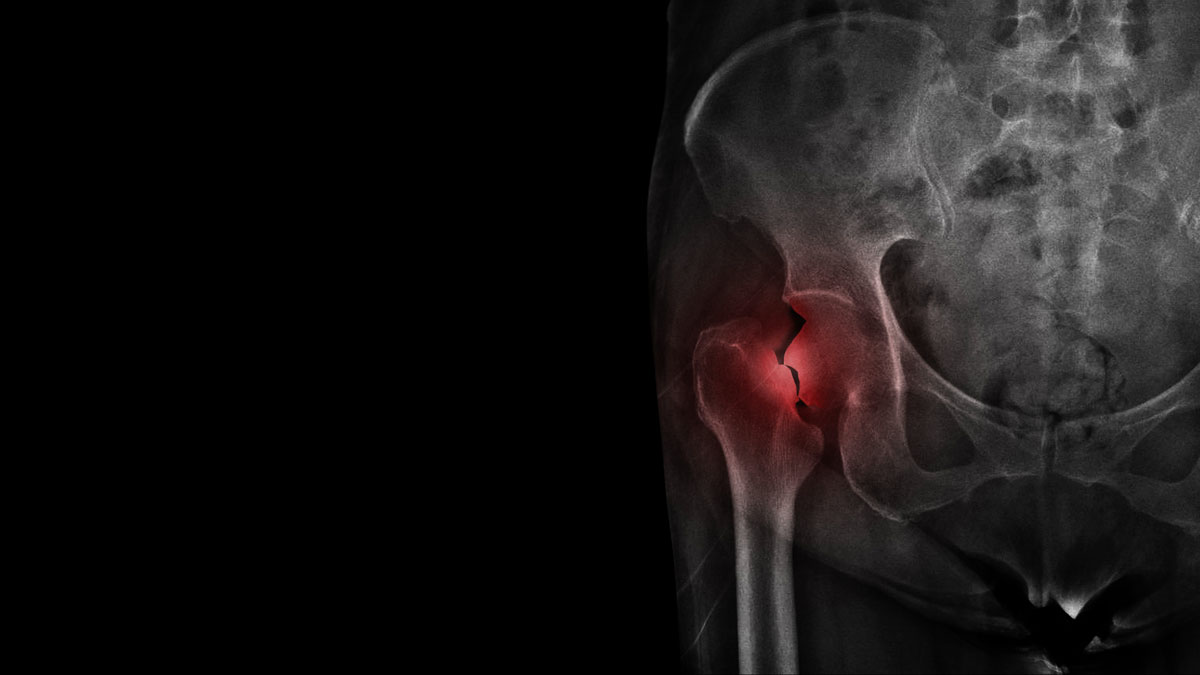The Western Australian Health In Men Study (HIMS) recently looked at how sex hormones might influence bone fracture risk, particularly hip fractures, in men.
In 3,307 community-dwelling men aged 70 years and older, men with plasma testosterone levels in the middle two quartiles experienced the lowest risk of any fracture, and of hip fracture. Men with lower and higher plasma testosterone levels had greater fracture risk.
The study allowed for other variables (e.g. age, existing medical conditions, frailty) indicating that testosterone was independently associated with fracture risk. This was 30-40% lower (40-50% for hip fracture) in men with mid-range plasma testosterone, compared to men with plasma testosterone in the lowest 25%. Men with plasma testosterone in the highest 25% had similar risk of any fracture, and hip fracture, as with men in the lowest 25%. Plasma oestradiol levels were not related to fracture occurrence.

Most previous studies have linked plasma oestradiol levels to fracture risk in men. HIMS, with a 10-year follow-up and 330 fracture events, including 144 hip fractures, is the largest study of its kind.
The findings indicate plasma testosterone levels, rather than oestradiol levels, are a robust hormonal indicator of fracture risk in older men. Due to the nature of HIMS, it is not possible to assess the rate at which testosterone was converted to oestradiol in tissues such as bone.
A major Australia-wide randomised controlled trial (T4DM) of testosterone treatment in men aged 50-74 years with waist circumference 95cm or greater and either impaired glucose tolerance or newly diagnosed Type 2 diabetes, completed in 2019, is about to be reported.
T4DM will discover whether testosterone treatment in men who do not have pituitary or testicular disease prevents or reverts Type 2 diabetes and whether testosterone treatment improves bone mineral density, and bone micro-architecture. If so, a larger interventional trial would be needed to clarify the role of testosterone treatment to reduce fracture risk in men.
The T4DM results and its bone sub-study, T4Bone, will be very informative.
Testosterone treatment is currently indicated in men with pituitary or testicular disease resulting in symptoms and signs of androgen deficiency, with commensurately low testosterone levels. Careful clinical assessment should precede, and ongoing clinical and biochemical monitoring accompany, testosterone therapy, aiming to achieve physiological levels.
The HIMS findings regarding fracture risk, reinforce this concept, highlighting that very high plasma testosterone levels may not be beneficial. Certainly, misuse and abuse of testosterone, (e.g. for performance or image enhancing) should be strongly discouraged.
Key messages
- A U-shaped association of plasma testosterone levels with fracture incidence is seen in older men
- Men with mid-normal range testosterone levels had lower risk of any fracture, including hip fracture
- Testosterone treatment is indicated for men with pituitary or testicular disease (causing androgen deficiency) to restore levels to the physiological range
References available on request.
Questions? Contact the editor.
Author competing interests – the author has received speaker honoraria, conference and/or research support from Bayer, Lilly, Lawley Pharmaceuticals, Besins Healthcare and Ferring
Disclaimer: Please note, this website is not a substitute for independent professional advice. Nothing contained in this website is intended to be used as medical advice and it is not intended to be used to diagnose, treat, cure or prevent any disease, nor should it be used for therapeutic purposes or as a substitute for your own health professional’s advice. Opinions expressed at this website do not necessarily reflect those of Medical Forum magazine. Medical Forum makes no warranties about any of the content of this website, nor any representations or undertakings about any content of any other website referred to, or accessible, through this website.


